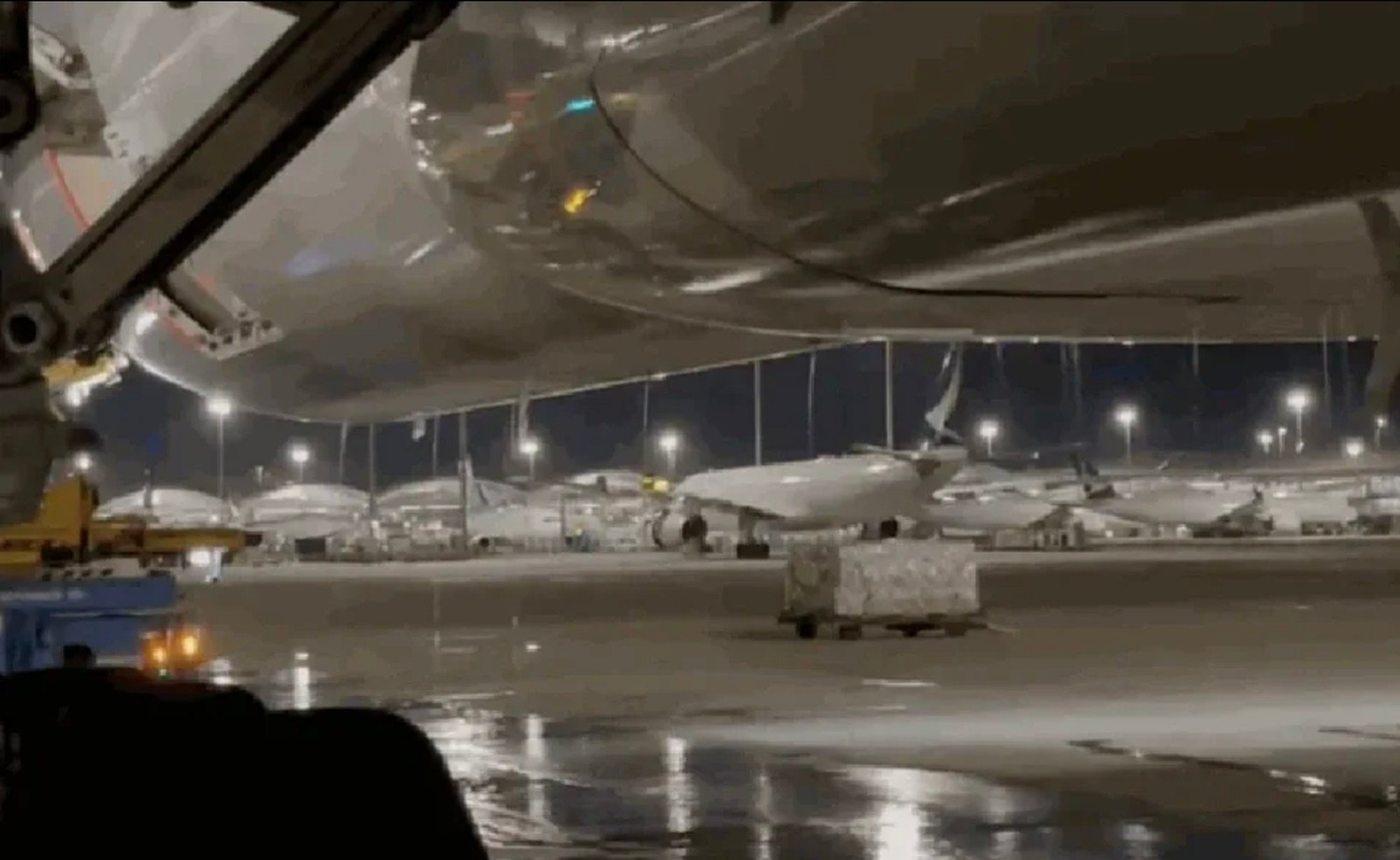
Hong Kong authorities order Cathay Pacific to investigate leaking aircraft water tank that delayed Los Angeles flight by 12 hours
- Flight 880 delayed because of leaks found while servicing one of aircraft’s water tanks, Cathay says
- On Saturday, Los Angeles-bound flight aborted its take-off in Hong Kong and abruptly braked, with 11 passengers hurt while using emergency slides
Cathay said flight 880, which had been expected to depart from Hong Kong for Los Angeles early on Monday, was delayed because of a leakage found while servicing one of the aircraft’s water tanks. Photos circulating on social media show water pouring to the ground from the aircraft in multiple spots.
‘Highly concerned’: evacuation by Hong Kong’s Cathay in government spotlight
The leaks were caused by a water tank defect, Cathay told the Post on Tuesday.
“Another aircraft was deployed to operate the flight with a revised departure time to accommodate the lifting of the night curfew at Los Angeles International Airport,” an airline spokesman said.
“Overnight hotel accommodation was provided to the affected passengers. We sincerely apologise for the inconvenience caused to our customers’ journeys.”
The flight departed from Hong Kong at 12.13pm on Monday.
Authorities demanded an investigation into the incident.
“The Civil Aviation Department has immediately followed up with the airline involved, and it has also demanded the airline conduct an investigation and submit a report,” a spokesman said, adding it would closely follow the progress of the inquiry.

The incident came three days after another Los Angeles-bound flight aborted its take-off in Hong Kong on Saturday and abruptly braked, which led to 11 passengers sustaining injuries as they exited the aircraft via the emergency slides.
Li Wing-foo, chairman of the Staff and Workers Union of Hong Kong Civil Airlines, said it was possible the aircraft involved in the latest incident was in the fleet parked in the Australian desert during the pandemic and suffered from damage due to weathering.
“It’s hard to say whether the incident was a result of negligence because some defects can be visible to the eye, while some will only surface after a few times’ usage,” he said, adding he had never heard of such an incident before.
“The aircraft should have undergone servicing before it returned from Australia, but the technicians may focus on items that will affect flight safety first.”
Cathay take-off scare: why bags, high heels a no-no if you exit aircraft by slide
He said the danger posed by the incident would depend on how much water leaked, and the locations of the leakage.
Warren Chim Wing-nin, a spokesman for the Hong Kong Institution of Engineers’ aircraft division, said checking the water tanks was part of the scheduled maintenance inspection of aircraft, but it was possible only visual checks were carried out.
“The water tanks are inside the aircraft, and theoretically can hardly burst on their own, or be hit by anything,” he said.
“It’s essential to look into the cause of the leakage, and whether the water tank defect was an isolated incident or a wider issue affecting all water tanks of the same batch.”
He said the parking of an aircraft in the desert was unlikely to affect water tanks, which were not exposed. The glass-fibre material is not prone to rusting either.
“The extent to which the water leakage may affect aviation safety depends on where the water went, and what it had damaged, but there aren’t any important electronic components near the tanks,” he said. “There may not be any imminent risks.”

